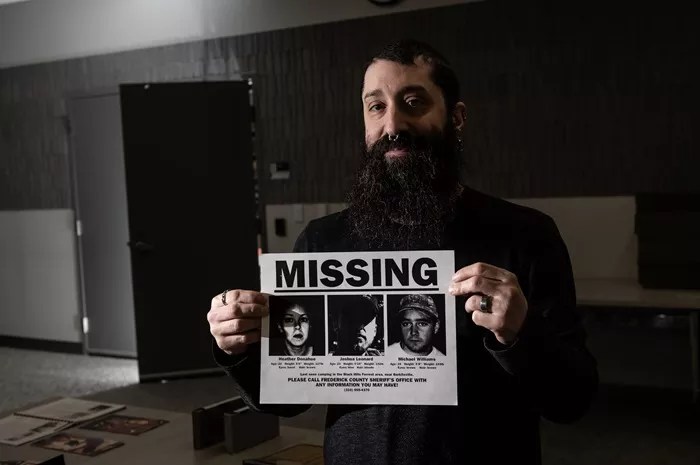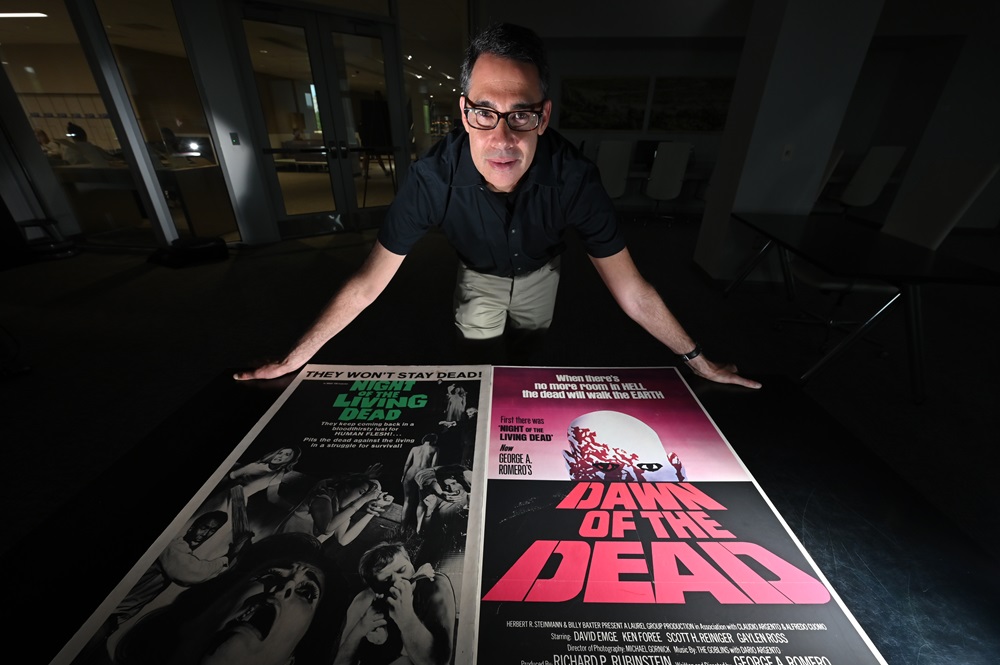For horror fans, Pittsburgh has long been sacred ground. It’s where Night of the Living Dead was born, where Dawn of the Dead turned the Monroeville Mall into a cinematic shrine, and where filmmaker George A. Romero built a sub-genre that changed the world. Now, that legacy has an academic home.
The University of Pittsburgh officially launched the Horror Studies Center earlier this fall, touted as the first of its kind. Led by Pitt film professor Adam Lowenstein, the center expands on the university’s Horror Studies Collection, which houses Romero’s personal papers and production materials.
“The Horror Studies Center is the result of many years of hard work,” Lowenstein tells Pittsburgh City Paper. “It really grew from the idea that Pittsburgh is a world capital for horror because of the connection to George Romero’s films.”
That connection dates back to 1968, when, according to Lowenstein, Night of the Living Dead, Romero’s first feature film, became “an incredible success,” adding “it captured the cultural zeitgeist in such a way that it became an instant classic.”
“Unfortunately, he and his collaborators never made a dime off it because it wasn’t correctly copyrighted,” says Lowenstein.
Still, Romero’s creative shadow looms large. “In many ways, in Pittsburgh film, all roads lead to Romero,” Lowenstein says. “He trained so many people — Peggy Ahwesh, Tony Buba, Greg Nicotero — who went on to have their own successful careers.”
At its core, the Horror Studies Center serves as more than a vault of memorabilia — it’s a hub for scholarship, student research, and community engagement; one that treats horror not as a guilty pleasure but as a complex, global language.
“Horror actually has more to teach us about events we’d categorize as historical trauma — like the Holocaust, Hiroshima, Vietnam — than the often Oscar-winning films that are about these events explicitly,” says Lowenstein. “Horror knows that the past is never past, and that it’s still with us. It has a genuine vocabulary for pain, for suffering, for loss.”
Those aren’t abstract references. The Holocaust’s mechanized cruelty and generational grief. The blinding flash of Hiroshima, where survivors carried invisible wounds for decades. The televised carnage of Vietnam that seeped into America’s collective consciousness. Horror, he says, is the language that lets us look directly at what history prefers to bury.
Lowenstein’s own scholarship reflects that mission. His first book, Shocking Representation: Historical Trauma, National Cinema, and the Modern Horror Film, explores how horror mirrors cultural anxiety and political violence.
The center is also an interdisciplinary experiment, blurring the lines between art, psychology, and social science. One of its collaborators, Pitt psychiatry professor Greg Siegle, works with the Center to design virtual reality simulations focused on suicide prevention.
“Greg came to us and said, ‘I’m a scientist, I know science, but I don’t know how to scare people,’” Lowenstein says. “He needed them to be frightening for the simulations to work. So we helped him think through what makes fear effective.”
That exchange, Lowenstein explains, represents the Center’s ethos: a dialogue between disciplines that typically don’t share space.
Horror, in this view, isn’t just a genre. Rather, it’s a methodology. The Center recently sponsored Camera as Passport: The Ship of Photographers, an exhibition at the Jewish Community Center in Squirrel Hill that traces the work of German Jewish photographers who fled the Holocaust.
“There’s no masked killers, no monsters, no supernatural elements,” Lowenstein says. “But the Holocaust is a horrific moment in history that horror studies can help us understand.”
The heart of the Center’s work beats inside Pitt’s Archives & Special Collections, where the Horror Studies Collection lives. Horror Studies collection coordinator, Ben Rubin, the says the materials are open to everyone, not just Pitt affiliates.
“Visitors register a researcher account and can request materials to view in our Reading Room,” Rubin explains. “We encourage researchers to make an appointment to ensure what they want will be available.”
 Ben Rubin, coordinator of Pitt’s Horror Studies Collection at the Hillman Library, holds the MISSING poster from The Blair Witch Project Credit: Photo: Courtesy of the University of Pittsburgh
Ben Rubin, coordinator of Pitt’s Horror Studies Collection at the Hillman Library, holds the MISSING poster from The Blair Witch Project Credit: Photo: Courtesy of the University of Pittsburgh
For casual visitors, there’s also a public exhibit gallery on the third floor of Hillman Library, which features horror materials on display. No appointment necessary.
Recent additions to the collection include a first edition of Dracula and a script archive from the cult television series Kolchak: The Night Stalker, both of which signal the collection’s widening scope. Rubin’s goal, he says, is to “capture the breadth of the genre as best as possible.”
That includes acquiring archives from underrepresented voices and a wider range of subgenres.
“Courses being taught and faculty or student interests can also drive collection growth,” Rubin adds. “We want resources that support both scholarship and creative curiosity.”
While rooted in Pittsburgh, the Horror Studies Center has already gone global. Lowenstein and his team have forged partnerships with universities in Japan, Canada, the UK, and Australia.
“One example is a series of conferences on global horror we ran with Kyoto University and the Australian Centre for the Moving Image in Melbourne,” Rubin says. “By starting with Japan and Australia rather than the usual U.S. and U.K., we got a totally different picture of what horror is and where it comes from.”
That transnational lens also informs the Center’s acquisitions. “We’re in the happy situation now where people are coming to us rather than us seeking them out,” Lowenstein says. “We’re really the only horror studies archive at an academic university, and it’s open to the public — you can make an appointment and see everything.”
Long term, Lowenstein hopes the Center will serve as the educational foundation for something even bigger — a horror museum in Pittsburgh. A recent feasibility study conducted in collaboration with Carnegie Mellon University found that such a museum would not only be sustainable but also economically beneficial for the city.
“That’s a dream we’re actively pursuing,” he says.
Until then, Lowenstein is still drawn to the places that keep Pittsburgh’s eerie pulse alive. His top three? The Evans City Cemetery, where Night of the Living Dead was filmed; the soon-to-be-demolished Monroeville Mall, immortalized in Dawn of the Dead; and the “wonderfully creepy” Cathedral of Learning, the Pitt landmark where he works every day.
“It’s a classic Gothic building with all kinds of nooks and histories that suggest you could be joined by ghosts at any time,” he says. “And at least some of that must be true.”
RELATED

